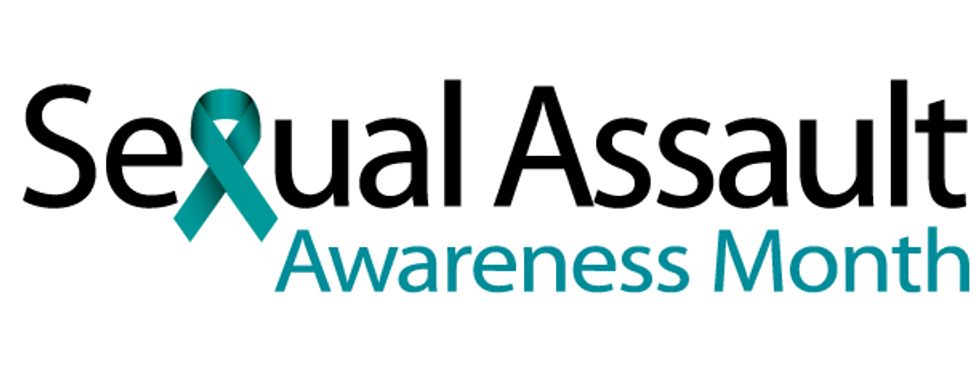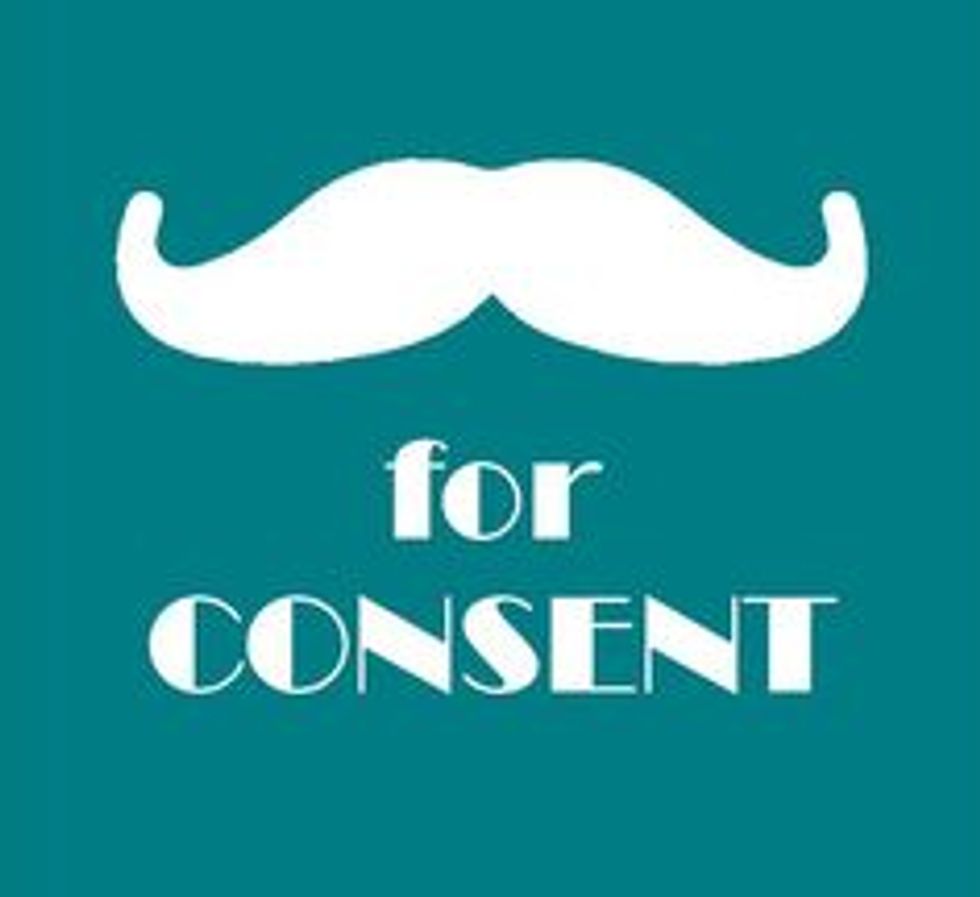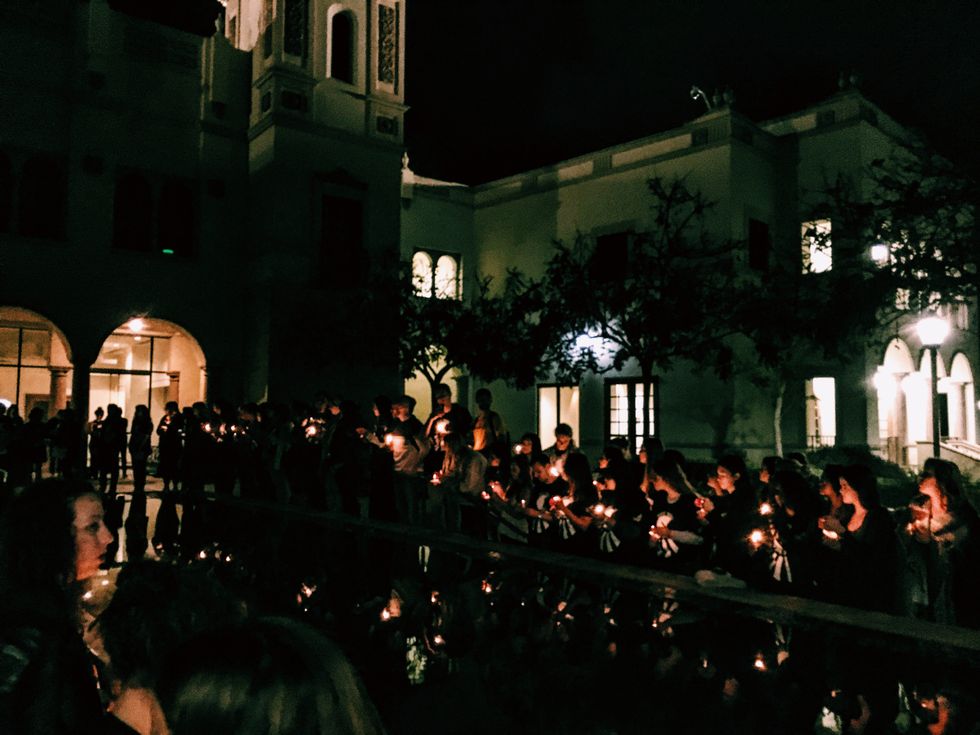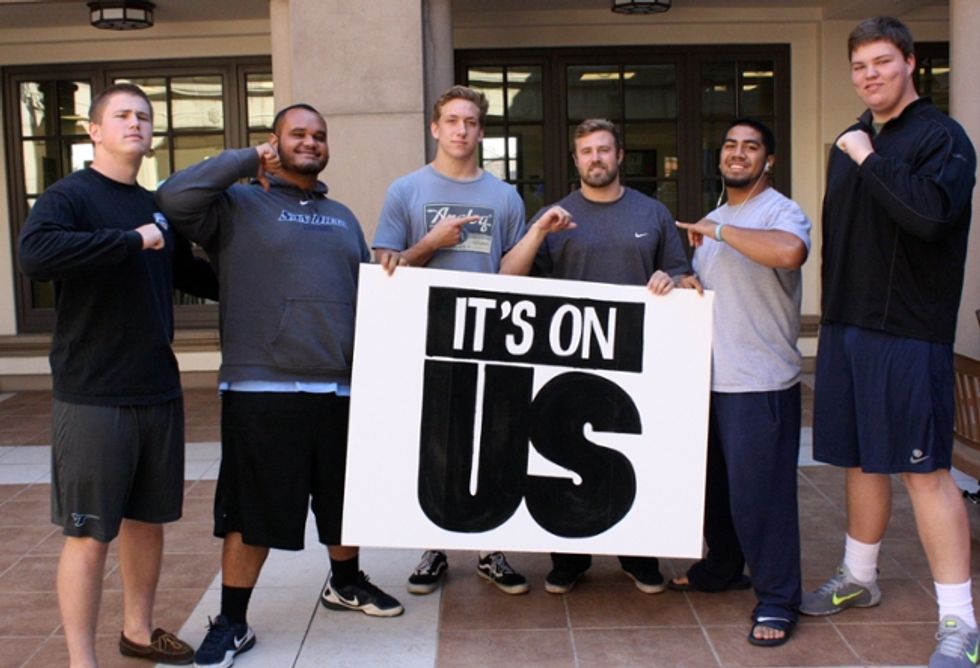Last week was Sexual Assault Awareness Week on USD's campus, and the whole month of April is designated as Sexual Assault Awareness Month. Here are a few definitions and statistics you should know:
- “Sexual Assault” is any unwanted physical contact of a sexual nature that occurs either without the consent of each participant or when a participant is unable to give consent freely.
- “Consent” is voluntary, non-ambiguous, positive agreement between the participants to engage in specific sexual activity.
- 1 in 5 women will be sexually assaulted in college
- 4/5 rapists are known to the victim
- 68% of sexual assaults are not reported to police
- 4/5 rapists are known to the victim
*these statistics are provided by RAINN (rape, abuse, and incest national network) which is recognized as the nation’s largest anti-sexual assault organization
As a part of SAAW (Sexual Assault Awareness Week), students and others on campus were invited to participate in an event called “Take Back the Night.” During this event, we marched around campus and ultimately ended the night at the IPJ for a candlelit vigil for survivors of sexual assault. At the vigil, two students opened up about their personal experiences as being victims of sexual assault at USD. This service was moving and eye-opening, as men and women from all over campus willingly came together to talk about an issue that is so prevalent on college campuses around the world. I promise that you know at least one person who has been sexually assaulted, you have seen them walking on our campus, you have seen them in the SLP, or they are in your class. You just may not know explicitly who they are.
USD is undoubtedly a very safe campus in comparison to many other larger universities, but sexual assault still happens here. According to the USD Department of Public Safety’s 2014 Crime Report, there were 6 rapes that year. That does not seem like a large number at all, right? But around 68% of rapes occur off campus…and I know at our university this holds very true, as we consistently flock to off-campus parties on the weekends. Also, as mentioned before, a majority of rapes aren’t even reported, so how many actually occurred?
This past weekend I attended a solely student facilitated discussion on sexual assault for members of Greek Life, and we were presented with some USD specific statistics about sexual assault obtained from a student organized survey. To my disappointment, after searching the internet and the university website heavily, I was unable to find these statistics published anywhere. This makes me feel that our institution is attempting to cover up sexual assault to maintain the belief that our university is a great and safe one, and it is. But we should not prioritize a pristine image over the safety, well-being, and education of our students. During the sexual assault discussion, I was placed in a group with five women and three men. It was uncanny to see the difference in attitudes between the men and women throughout the discussion. The women appeared calm when reading the statistics, as most of us had likely heard them before and many women acknowledged that this issue is something we seem to just accept as a part of college, but the men appeared unnerved and often a bit shaken up while reading the statistics. Having this discussion was a unique opportunity to establish that sexual assault is not just a problem for women--that both men and women on our campus have the power to act and change these statistics.
It is as easy as speaking up when a friend says an inappropriate joke, or helping someone out at a party when it looks like they are in an uncomfortable situation. Small things can create a big change. Start the conversation and speak up, it's on us.
click on the link below to access USD's campus assault resources and education website for more information:




















